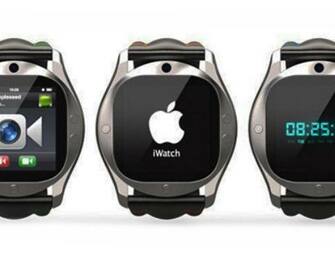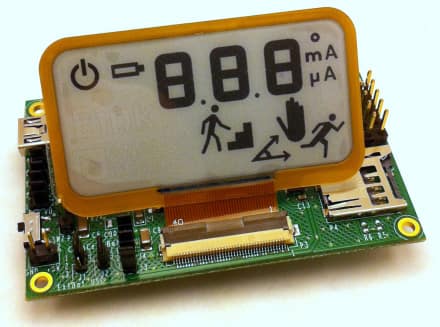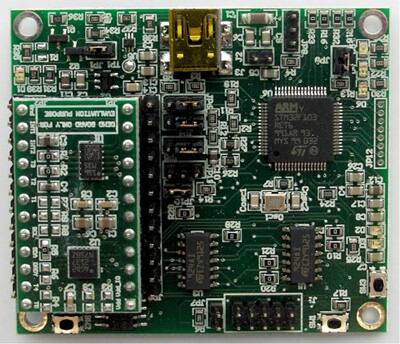Harnessing Ambient Energy to Detect Motion and Save Power
投稿人:DigiKey 欧洲编辑
2013-05-15
Harnessing ambient energy to detect motion is finding its way into a wide variety of applications in all environments, including consumer, industrial, medical and security sectors. Sensor fusion, combining motion with other sensor types, is expanding, as integration with controllers and interfacing circuitry increases. In some cases, the sensors are detecting external motion, such as occupancy sensors for energy-saving lighting control. In others, they are sensing the movement of the device to which they are attached, such as sports and fitness equipment.

Figure 1: Sports clothing and equipment manufacturers have exploited kinetic energy for some years. Now the technology is maturing. Photo source: Ecouterre.com.
In most of these applications, particularly battery-powered devices, power consumption remains a critical factor. Energy harvesting techniques can provide the additional power needed, either to power systems directly, or to provide a battery boost. This is especially useful in environments where batteries cannot be used or cannot easily be replaced. Ironically, motion (kinetic energy) is a potential energy source to be harvested, but piezo-electric, thermo-electric, solar and RF power sources can prove just as useful.
This article will highlight actual and potential motion sensing applications that benefit from harvested ambient energy: be it in the home, office or factory; in health and fitness; in the car; as well as in a host of portable devices such as games, smartphones, and cameras. A number of specialist motion sensing components have been designed specifically for ultra-low-power operation.
The article considers some example energy harvesting devices that are ideally suited to such applications, together with development kits that help engineers investigate the potential of energy harvesting. These include EnOcean’s PTM200C energy harvesting switch and STM300 RF transceiver module and Cymbet’s EnerChip™ EP CBC915, as supplied on its CBC-EVAL-09 evaluation board. The ZigBee RF4CE standard for low power wireless sensor networks is finding favor in motion sensing and motion control applications. The Texas Instruments RF4CE development kits are a good starting point.
Is there anybody out there?
Occupancy sensing in conjunction with lighting control is one of the most obvious applications for motion detectors. It is an essential feature in most smart building concepts, whether installed in the home, office, factory or civic building. It is becoming more widely used in broader smart city initiatives in outdoor environments, such as residential street lighting and car parks. Power saving is the primary objective, and exploiting ambient energy to run these systems can make a significant contribution.
Individual wireless sensor nodes in lampposts, for example, can be powered by energy from solar, RF, or vibration sources. In some smart city trials, sensors detecting passing traffic are installed in lighting gantries or other street furniture, and networked to provide congestion monitoring information. Such installations are often combined with ambient light detectors, temperature, air pressure, pollution sensors, and rain detectors.
For smart lighting in the office or factory, energy harvesting to power wireless systems enables the easy reconfiguration of modular working spaces, with no cabling hassles. When combined with ambient light detectors, sophisticated controllers can not only turn lights on when occupancy is detected, but can adjust the brightness with reference to how much light is available from nearby windows or other light sources.
With the inclusion of an energy storage device, such as a supercapacitor or battery, energy harvesting can store excess energy for use when the power source is not operational. Solar cells running occupancy sensors, for example, can typically store enough energy while light is available to operate for up to 48 hours in darkness when fully charged. Of course, this is dependent on the use of sufficiently low power sensors, control circuitry and wireless networking protocols.
In the factory
On the production line, motion detection is used in a host of applications for machine monitoring, process control, detecting the approach of items on an assembly line, or packing station, and lighting control. Again, autonomous wireless sensor nodes are ideal for when production lines are reconfigured, and for installation in or on difficult to access or hazardous environments, where it would be near impossible to replace batteries.
Do the locomotion
Using electronics to monitor our health and fitness is fast becoming an obsession, and not only in countries with increasing population obesity figures. The market for wearable sensing devices is forecast to grow to at least $6 billion by 2016, according to IMS Research.¹
In the healthcare and medical sector, existing products include electro-cardiac activity monitors and blood sugar/glucose/insulin monitors. In the fitness and wellbeing sector, there are the classic heart-rate monitors from companies such as Polar and Garmin. None of these devices have typically included motion detection, and only a few emerging designs are adopting energy harvesting techniques. But that is about to change.

Figure 2: The kinetic watch of the future will do a lot more than just tell the time. Apple is rumored to be introducing the iWatch in 2014. Whether ambient energy will be harvested to supplement battery life remains to be seen.
New wearable activity monitoring devices are already emerging and these incorporate motion detection, initially for simple tasks such as step counting. The next generation of wearable sensors will most likely include more sophisticated devices such as gyroscopes and pressure sensors, which when combined with motion sensors and wireless communication, opens up a huge new area, not only for consumer fitness monitoring devices, but also for professional sports training.
Wearable motion sensors will give anyone interested in personal fitness the opportunity to monitor how much activity they have clocked up in a day. Such sensor-based devices are ideal for exploiting ambient energy harvested from the human body itself, solar power, vibration (such as in a running shoe). A small battery or supercapacitor can typically retain enough charge to power the device in standby or ultra-low power mode when ambient energy is not available.
Solar fabrics
The military market is particularly interested in exploiting wearable technology, combining sensors and wireless communications, for a range of communications, monitoring and safety applications. It is actively experimenting with solar fabrics to provide the energy to power such devices. In fact, the military/aerospace industry has been identified as one of the leading growth segments for energy harvesters.²
A recent example of a wearable device exploiting motion detection is the Blast Gauge, which uses accelerometers together with pressure and other sensors, in a lightweight helmet-mounted ‘black-box’ unit. The device measures the effects of nearby explosions in order to provide data later to medical staff and scientists on the likelihood or extent of traumatic brain injury from the blast.
Every which way
Using motion sensors to detect the movement of the device to which it is attached is another growing market, again with great potential for energy harvesting. MEMS-based motion trackers today typically feature 9-axes of sensing by utilizing 3-axis gyroscopes, accelerometers, and magnetometers. Such devices can measure linear motion, rate of rotation, direction and altitude. They can be integrated in a tiny package, together with a low power microcontroller and wireless telemetry circuitry, and easily packaged into a thin, lightweight, wearable device, or incorporated into a smartphone or other digital device. Embedded software is helping reduce the processing power and memory required in order to keep the power profile low enough to maintain the target battery life. However, energy harvesting is an obvious supplementary technique that is likely to be employed.
Smartphones, cameras, and game machines are using these devices not only for free-fall detection and switching to power saving or active modes, depending whether motion is detected, but also to determine orientation (portrait/landscape) to display data, and for gesture recognition. Despite higher integration, reduced component count, and comparatively low power consumption, overall system power usage is still a concern. The use of small solar cells and RF power scavenging are two techniques increasingly being used to supplement battery power, and to trickle charge batteries in portable devices.
A fast developing market for autonomously-powered wearable sensors incorporating motion detection is in broadcast sports, both professional and amateur. We are already seeing wireless sensor nodes incorporated into tennis racquets and golf clubs to monitor and analyze swing, impact force, reaction time, speed and distance. This trend will continue, ultimately enhancing spectator interest with a host of information available to analyze the performance of professional players.
From a technological standpoint, although a battery may provide sufficient power to operate a device for the duration of a game, energy harvesting provides an elegant and reliable solution, obviating the need to recharge or replace batteries.
Specialist devices
It is worth mentioning a couple of recently introduced specialist devices for motion detection. The ADXL362 from Analog Devices, for example, is an ultra-low power, 3-axis MEMS accelerometer that consumes less than 2 µA at 100 Hz output data rate, and 270 nA when in motion-triggered wave up mode. It samples the full bandwidth of the sensor at all data rates with 12-bit output resolution and 8-bit formatted data. It includes a micropower temperature sensor and several activity detection modes.
Ideal for combining with an energy harvester, it operates on a 1.6 to 3.5 V supply range and can interface, if necessary, to a host operating on a separate lower power supply voltage. It is aimed at hearing aids, consumer health monitoring, motion-enabled power save switches, wireless sensors and motion enabled metering devices. It has already been selected by DARPA for the next generation Blast Gauge device, as mentioned above.
The EVAL-ADXL362Z evaluation board is designed to enable easy application of an ADXL362 3-axis accelerometer into an existing system. Although it requires the addition of a microprocessor and some firmware, it can also be used to evaluate the device. Alternatively, the more complete EVAL-ADXL362Z-MLP evaluation kit includes a Renesas ultra-low power microcontroller with firmware. The board is preconfigured as a motion activated on/off switch, although other firmware examples are available. The board can be powered over USB, with a coin cell battery, or from an external source.

Another pioneer of 3-axis accelerometers, STMicroelectronics, offers 3-, 6-, and 9-axis MEMS chips in its iNemo inertial module range. The LSM330DLC combines a 3-axis accelerometer, 3-axis gyroscope and two programmable state machines that execute motion-processing algorithms. It is designed for gesture recognition in smartphones and tablets, among other devices.
The state machines can be programmed to detect free-fall, to wake up devices when motion is detected and for changing display orientation, as well as for new fitness monitoring applications such as pulse and step counting. It can operate with supply voltages between 2.4 and 3.6 V. This device is designed for low power operation, making it suitable for use in combination with energy harvesting techniques. It offers both a low power and a power down mode. Just announced, soon to be available in production volumes, is the LSM330, with the same functionality at only half the size of its predecessor.
An adapter board (STEVAL-MKI122V1) is available to help evaluate the device family, providing an effective fast prototyping solution at the same time. It is fully compatible with a range of other adapter boards, including the STEVAL-MK119V1 demonstration board. This kit comprises two boards, the eMotion based MEMS motherboard with STM32F103 high performance 32-bit microcontroller plus another board featuring the L3GD20 motion sensor/gyroscope and LSM303DLHC 9-axis accelerometer/magnetometer modules. The kit is ready for use with the iNemoEngine_PW8, and suitable for developing a range of motion detection applications.

Energy in motion
Exploiting ambient energy to run ultra-low power motion sensing devices makes sense, even if only to keep the battery topped up. There are a number of energy harvesting kits available supporting single or multiple ambient energy sources, and providing solid-state storage options and low-power microcontroller and power management circuitry.
For smart building applications, such as lighting controls with occupancy sensing, EnOcean is leading the field. The company has already teamed up with major OEMs to produce sophisticated, energy-saving lighting systems. Devices such as the PTM200C, miniature battery-free switch module can be mounted virtually anywhere to provide remote switching or control features.
The company also offers the STM300 energy harvesting wireless sensor device, which includes a low power RF transmitter module. Features of this bi-directional module include configurable wake-up and transmission cycle, four digital inputs, and three ADC inputs. The device can be combined with a number of sensors, LEDs and actuators, with an energy storage device, and powered from an ambient energy source, such as a solar panel.
Cymbet, meanwhile, offers two kits to help engineers get started. Either is designed to demonstrate how the correct combination of energy harvesting transducer, power management module, low power sensor, low power microcontroller and optimized radio link can deliver, effectively, a maintenance free, zero-power wireless sensor network.
The Cymbet CBC-EVAL-09 board, based on its proprietary EnerChip energy processor, provides energy conversion, energy storage and load power management. The board supports energy harvesting from solar, thermal, EM/RF and vibration sources. The CBC-EVAL-10 kit, meanwhile, focuses on solar energy harvesting and as does the Texas Instruments eZ430-RF2500 solar powered, MSP430-based wireless evaluation kit.
Solar battery charging
Additional development kits and evaluation boards are available from Texas Instruments. For battery-operated motion sensing applications that would benefit from autonomous battery charging via solar energy harvesting, the BQ24210 solar charge device can be evaluated on the BQ24210EVM-678 module. Designed to charge lithium ion batteries, the device is aimed at space-limited portable applications. It is described as ideal for charging from alternative power sources such as solar panels.
Finally, it is worth mentioning that the choice of wireless protocol can make a difference to sensor node power requirements. One incoming approach, already being applied to motion sensing, is the ZigBee RF4CE wireless communication standard. Designed specifically for advanced remote control applications, including home entertainment devices, garage door openers, keyless entry systems, among others, RF4CE is claimed to be simple to implement, robust, low cost, and secure.
French motion sensing and processing technology specialist Movea believes RF4CE is promising for future ‘sensor fusion’ designs. The company has been working with Texas Instruments, resulting in the CC2533 RF4CE development kit based on TI’s RemoTI software architecture and the CC2533 system on chip for IEEE 802.15.4 remote control systems. Combining RF transceiver functions with an 8051-compliant CPU, the device has efficient power modes for data retention below 1 µA, making it highly suited to low duty cycle systems where ultra-low power consumption is required. Short transition times between operating modes further ensure low energy consumption. The kit also includes a 3-axis accelerometer and a 3-axis gyroscope, target module, USB interfacing, and debugger.
Conclusion
Advanced motion detection devices combined with ‘sensor fusion’ and higher levels of electronic integration are enabling exciting new applications. Gesture recognition and motion detection in portable devices, occupancy detection in smart lighting schemes, wearable devices for health and fitness – these and more require ultra-low power operation. Energy harvesting has great potential here, either to power devices or sensor nodes directly, and/or to trickle charge batteries. New motion detection devices have been designed with ultra-low power consumption in mind, and thus can easily be powered by ambient energy.
References:
- IMS Research, wearable technology.
- IDTechEx Research Reports.

免责声明:各个作者和/或论坛参与者在本网站发表的观点、看法和意见不代表 DigiKey 的观点、看法和意见,也不代表 DigiKey 官方政策。








